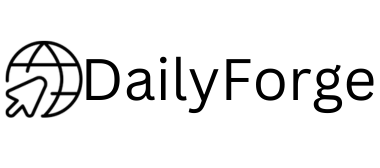Career gaps happen—and they’re more common than ever. Whether you took time off to care for family, travel, recover from illness, or pursue education, having a gap on your resume doesn’t have to be a dealbreaker. In fact, when addressed correctly, career gaps can even serve as an opportunity to highlight your growth, adaptability, and resilience.
In this guide, we’ll walk you through how to confidently handle career gaps on your resume and during interviews, helping you position yourself as a strong candidate for any role.
1. Normalize Career Gaps
First and foremost, understand that career gaps are completely normal. Employers are more accepting of gaps now than ever before, especially after the pandemic reshaped how we view work and life balance.
- Why It’s Okay:
- Many professionals take breaks for personal reasons, and recruiters increasingly value skills and experience over linear career paths.
- A gap can signify a period of growth, learning, or strategic planning.
- Mindset Tip: Avoid apologizing or downplaying the gap. Approach it with confidence and honesty.
2. Be Honest, But Strategic
Honesty is essential when addressing career gaps, but it’s equally important to frame the gap in a way that emphasizes your strengths.
- How to Address Gaps on Your Resume:
- Short Gaps (less than 6 months): You may not need to mention them unless asked in an interview.
- Longer Gaps: Briefly explain the gap in a positive light (e.g., caregiving, professional development, or exploring new opportunities).
- Example:
Instead of writing “Unemployed” or leaving the gap unexplained, try:
Career Break (January 2021 – December 2021)
Took time off to care for a family member while attending online professional development courses in project management.
3. Highlight Relevant Activities During the Gap
If you used your career break to grow professionally or personally, showcase these activities to demonstrate your initiative and dedication.
- Activities to Include:
- Freelance work or consulting projects.
- Volunteer roles or community involvement.
- Certifications, online courses, or workshops.
- Passion projects that developed transferable skills.
- Example:
Professional Development (June 2022 – March 2023)
Completed a Google Data Analytics Certification and volunteered as a project manager for a local nonprofit.
4. Use a Skills-Based Resume Format
A traditional chronological resume can draw attention to career gaps. Instead, consider using a skills-based or functional resume format that highlights your competencies and achievements first.
- How to Structure It:
- Create sections like “Core Skills” or “Key Accomplishments” at the top of your resume.
- Group experience by skill area rather than chronological order.
- Include a brief “Professional Summary” to emphasize your strengths upfront.
- Example Format:
Core Skills:- Digital Marketing Strategy
- SEO & Content Development
- Campaign Analytics & Reporting
- Professional Experience:
- Freelance Digital Marketer | 2022–2023
- Marketing Manager, XYZ Company | 2019–2021
5. Frame the Gap as a Strength in Interviews
Interviews are your chance to explain career gaps in person and show how the break made you a stronger candidate.
- How to Frame It:
- Highlight the skills or lessons you gained during the gap.
- Emphasize your readiness and excitement to return to work.
- Keep your explanation brief and steer the conversation back to your qualifications.
- Example Response:
“During my career break, I focused on personal development and gaining new skills. I completed a certification in digital marketing and volunteered as a campaign strategist for a nonprofit. These experiences helped me grow as a professional, and I’m now excited to bring that growth to your team.”
6. Address Career Gaps Confidently in Your Cover Letter
Your cover letter is another opportunity to address career gaps while emphasizing your qualifications.
- Tips for Cover Letters:
- Acknowledge the gap in one or two sentences—don’t overexplain.
- Focus on the skills, achievements, or lessons you gained.
- Transition to why you’re excited about the role you’re applying for.
- Example:
“After taking a career break in 2021 to focus on caregiving and professional development, I’m eager to reenter the workforce. During this time, I completed a certification in project management and developed stronger organizational and leadership skills. I’m confident these experiences will enable me to excel as a [position] at [company].”
7. Fill the Gap with Relevant LinkedIn Updates
Ensure your LinkedIn profile is aligned with your resume and clearly addresses career gaps. Recruiters often check LinkedIn profiles for additional context.
- What to Include:
- Add certifications, volunteer roles, or freelance projects to your LinkedIn experience section.
- Update your LinkedIn headline to reflect your skills and current career goals.
- Share posts about industry trends or personal development during your gap to show engagement.
- Example LinkedIn Update:
“Spent 2022 focused on upskilling in data analytics, completing a Google certification, and volunteering as a data consultant for local nonprofits.”
8. Focus on Transferable Skills
Regardless of what you did during your career gap, there are always transferable skills you can highlight.
- Examples of Transferable Skills:
- Problem-solving from caregiving or freelance work.
- Communication skills from volunteering or teaching.
- Time management from balancing personal and professional commitments.
- Example:
“During my career break, I developed strong time management and multitasking skills while caring for a family member and pursuing professional certifications.”
9. Prepare for Tough Questions
Some recruiters may ask pointed questions about your career gap. Be prepared to address them with confidence and honesty.
- Common Questions:
- “Why did you take a break from work?”
- “What did you do during your career gap?”
- “How have you prepared to reenter the workforce?”
- Example Answer:
“I took a career break to focus on personal priorities while also developing new skills. I used this time to complete a project management certification and stay updated on industry trends through webinars and online courses. I’m now fully prepared to contribute to your team.”
10. Emphasize Your Readiness to Return
End every conversation about your gap by expressing your excitement and readiness to return to work. Employers want to know you’re motivated and focused.
- Key Phrases to Use:
- “I’m excited to bring my skills back into the workplace.”
- “This break gave me clarity and renewed focus on my career goals.”
- “I’m confident I can hit the ground running and add value to your team immediately.”
Conclusion
Career gaps are nothing to fear when approached strategically. By being honest, emphasizing the skills and experiences gained during your break, and framing the gap as an opportunity for growth, you can confidently position yourself as a strong candidate.
Remember, employers value transparency, resilience, and a forward-focused attitude. Use these strategies to handle career gaps with confidence, both on your resume and in interviews, and showcase why you’re the perfect fit for your next role.

